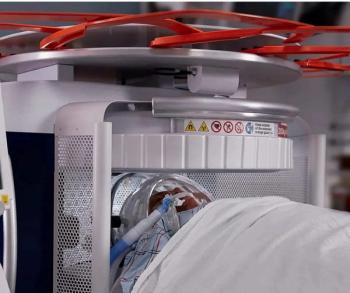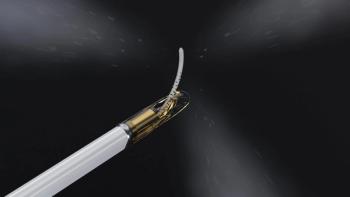
Functional MRI techniques vie to replace biopsy
Technical advances in MRI have paved the way for functional imaging of the abdomen, moving beyond simple morphological evaluation of disease and in some cases proving superior to multislice CT.
Technical advances in MRI have paved the way for functional imaging of the abdomen, moving beyond simple morphological evaluation of disease and in some cases proving superior to multislice CT. With quantitative imaging tools at their disposal, radiologists are rethinking what they need to visualize with MR to answer new clinical questions.
Dr. Bernard van Beers, a professor of radiology and head of medical imaging at the Universite Catholique de Louvain in Brussels, lectured at the European Congress of Radiology on the value of quantitative functional MRI to detect and characterize diffuse liver diseases. The most frequent diffuse liver diseases are steatosis and fibrosis, both of which are reversible, thus, the urgency for early detection and accurate staging. Progressive liver fibrosis, for example, leads to cirrhosis, portal hypertension, and hepatocellular dysfunction. Morphological MRI can detect advanced fibrosis, but it cannot discriminate between the early stages when treatment would be most beneficial.
Perfusion MRI works in diffuse liver diseases because microcirculatory changes that occur disrupt the sinusoidal fenestration and give free rein to macromolecules in extravascular space. Van Beers and others have validated this technique in animal studies and are beginning to amass evidence for its efficacy in patients. They've found that perfusion parameters significantly correlate to the Child-Pugh Score, which is a biometrical score of liver function, and to portal pressure. They've concluded that perfusion MR is an imaging biomarker of hepatic dysfunction and portal hypertension. Additionally, an experimental macromolecular contrast agent proved to be a surrogate marker of liver fibrosis.
"All of these techniques obviate the need for invasive biopsy," van Beers said.
Regarding diffusion-weighted MRI, researchers have shown that the apparent diffusion coefficient is decreased in cirrhosis, but there is considerable overlap in the ADC values between the different stages of fibrosis. MR elastography, however, is a much more sensitive technique that van Beers and colleagues have validated in more than 100 patients. As fibrosis progresses, the liver stiffens and elastography is able discriminate between each stage, more so than a standard blood test commonly used.
Liver steatosis, a fatty infiltration of the liver that can lead to diabetes, can be detected and quantified with high sensitivity with proton MR spectroscopy, but limitations persist. These include long acquisition times and overlap of signals from other areas. Steatosis also can be staged with fat-selective and phase-contrast imaging, van Beers said.
Perfusion postprocessing software is commercially available, but van Beers uses a homegrown version. He said that a lack of consensus on which parameters to measure and how to analyze the images to obtain these parameters has resulted in programs that rely on broad assumptions and so give relative rather than true values. This problem should be solved in the future, but stakeholders have already held several consensus conferences without reaching full agreement.
Newsletter
Stay at the forefront of radiology with the Diagnostic Imaging newsletter, delivering the latest news, clinical insights, and imaging advancements for today’s radiologists.


























